| |
the crispatula group |
In 2016 the C. crispatula var's are: balansae,
crispatula, decus-mekongensis, flaccidifolia, kubotae, planifolia, tonkinensis and yunnanensis. This is based
on differences in the leaf and in the spathe, especially the markings on the limb. As there is a broad range in these characters, it is sometimes arbitrary to name a variety. With this in mind it is the best solution.
The Cryptocoryne crispatula group consists of the 8 var's of C.
crispatula together with C. albida and C. retrospiralis. The
other (more or less narrow) linear leaved species from the mainland Asia, C. consobrina, C.
cruddasiana, C. loeiensis, C. mekongensis, C. sivadasanii and also C. spiralis are shown here to facilitate the
comparison. The key's provided by Jacobsen for the crispatula group are included,
and also the references.
Click on the picture to enlarge, click on the NAME to go to the page |
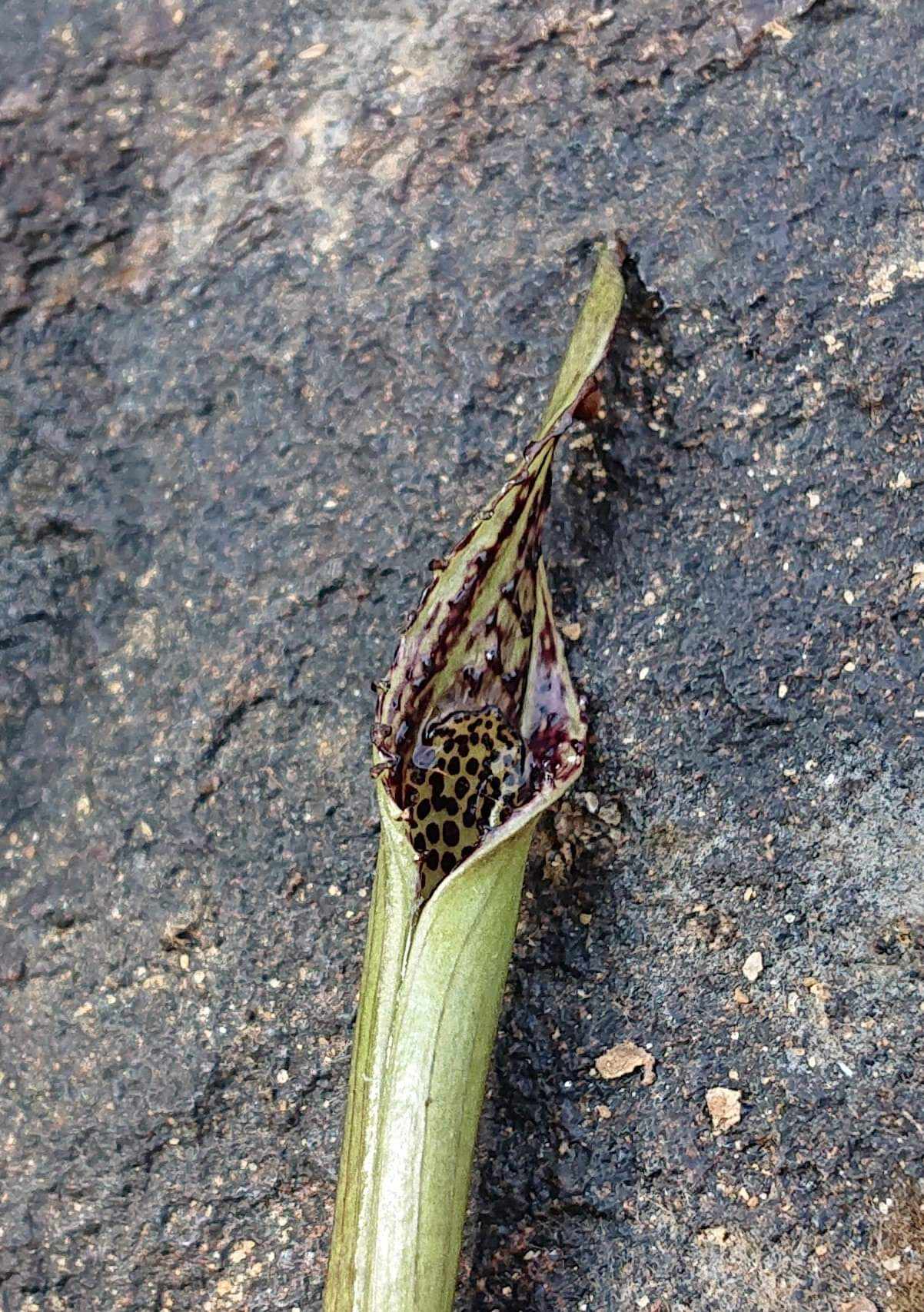 |
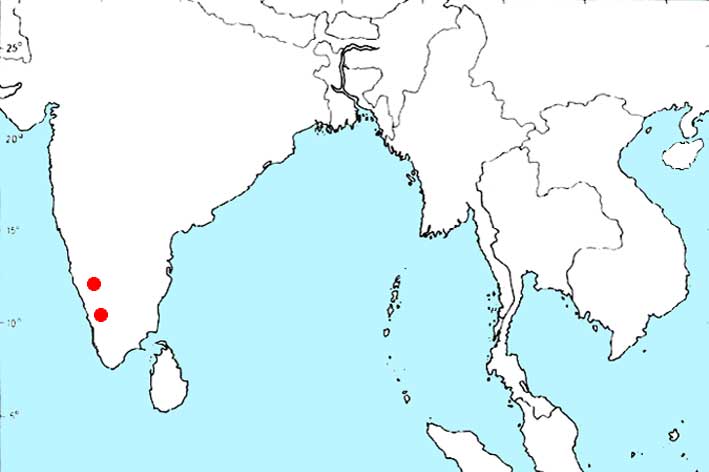 |
C. consobrina from India is recently recollected but till now not in cultivation. It has a rough limb of the spathe.
coll. Sunil
photo Sunil |
|
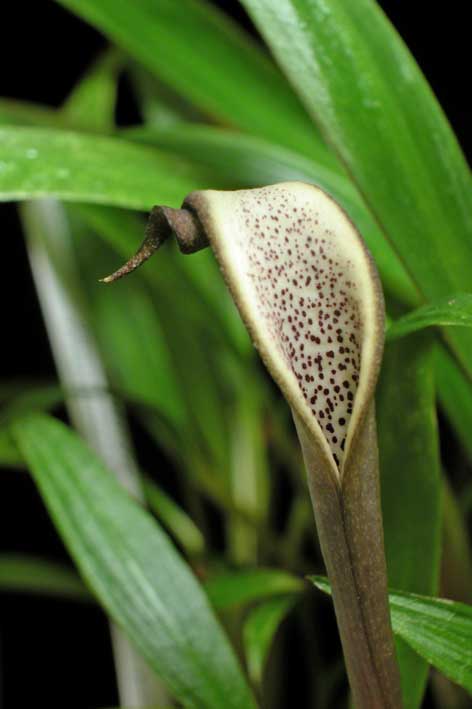 |
 |
C. crispatula var. albida from Myanmar (Burma) and Thailand has rather broad, lanceolate leaves from green to brown and
a wide open first twist of the limb of the spathe.
coll. NJT02-01, cult. B866 |
|
|
 |
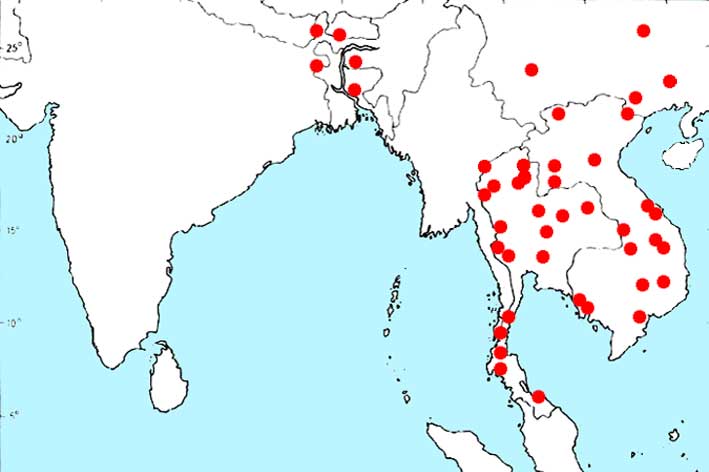 |
C. crispatula var. crispatula has narrow leaves with (mostly) an undulated margin. The leaves stand
upright even when emerged.
coll. & cult. NJ 77-36
photo Jacobsen |
|
| |
|
|
|
|
|
|
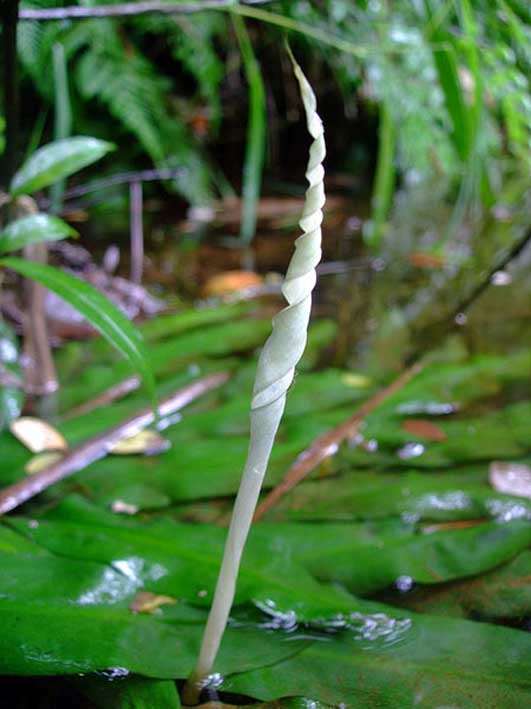 |
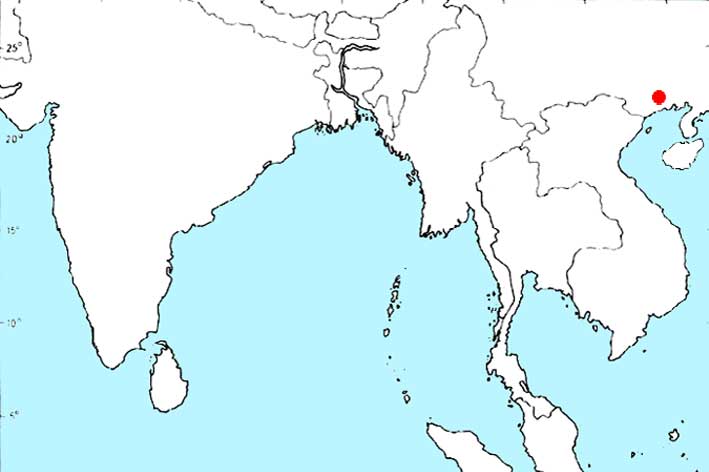 |
C. crispatula var. planifolia has broad smooth leaves with a red lower side. The spathe is fully white, both inside as outside.
coll. ZH2010-01
photo Zhou |
|
| |
|
|
|
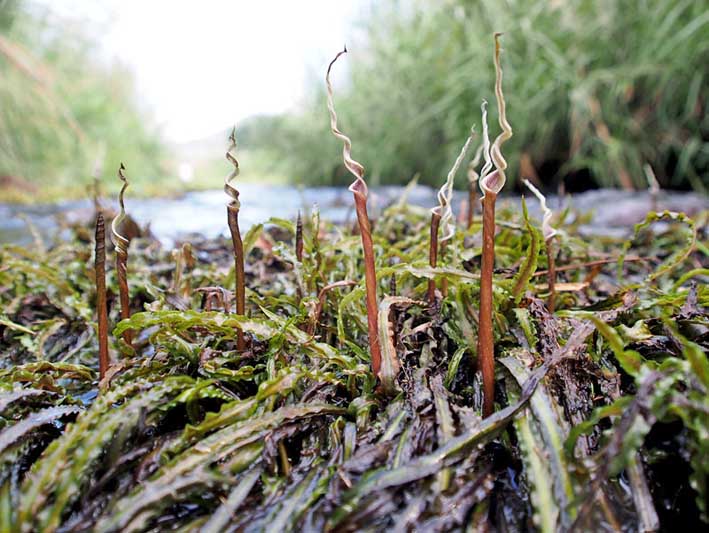 |
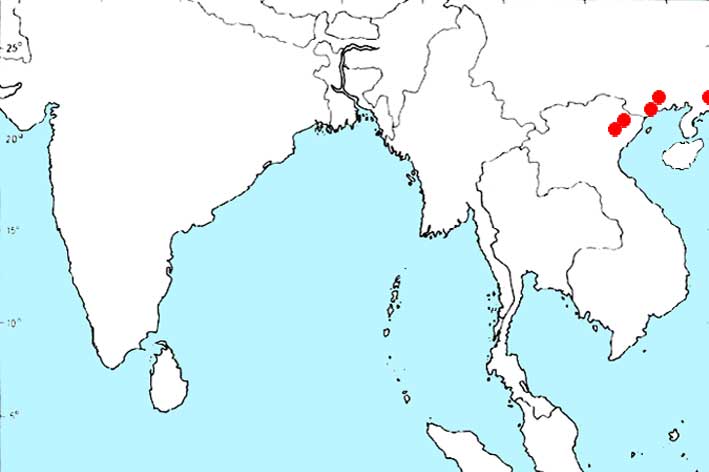 |
C. crispatula var. tonkinensiswith long, stiff, narrow leaves, the China form reddish, with an undulated margin, in Vietnam with more greenish smooth leaves.
coll. ZH2012
photo Zhou |
|
|
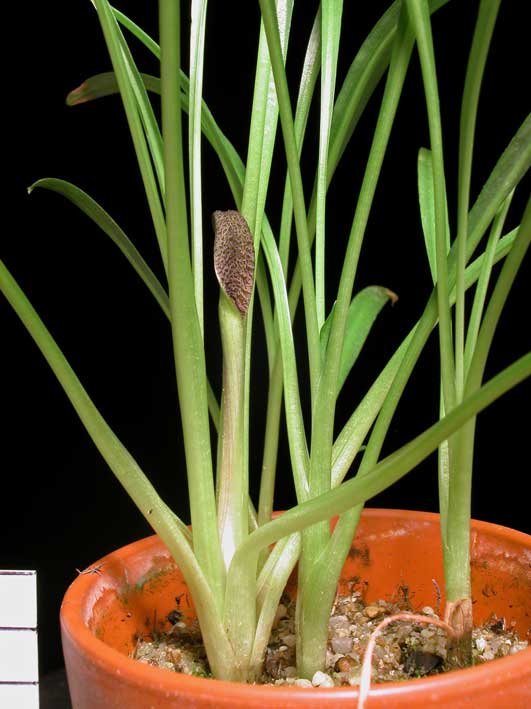 |
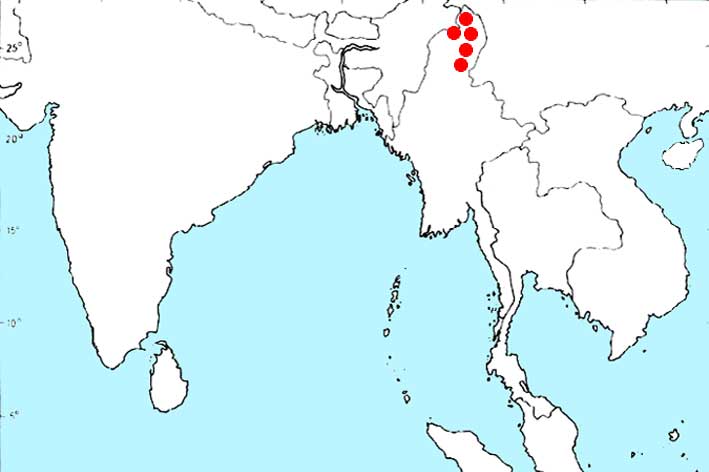 |
C. cruddasiana is from northern Myanmar (Burma). The spathe is
very distinct with transverse rims.
coll. Murata 041201, cult. B1192 |
|
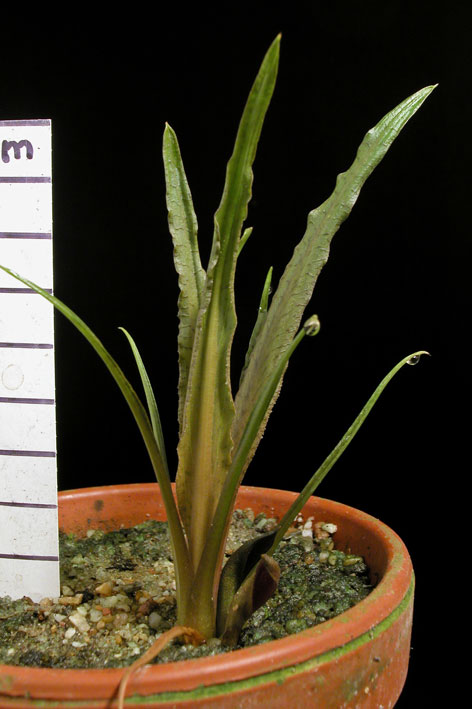 |
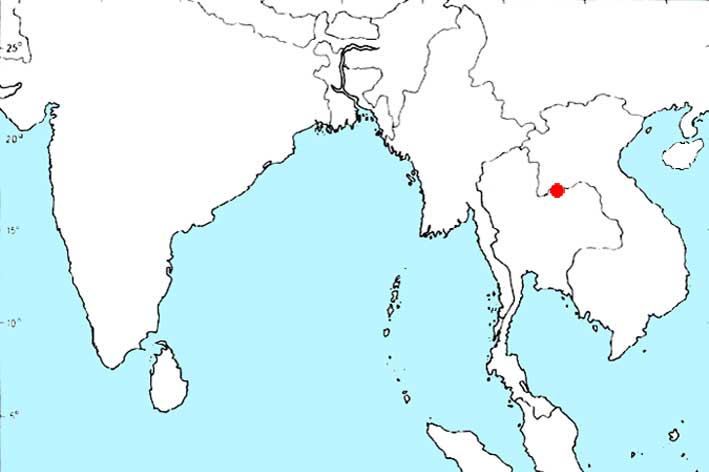 |
C. loeiensis from the Mekong river in northern Thailand grows in mixed populations with C. crispatula var. crispatula. It differs by having a rough red-brown limb of the spathe.
coll. T2, cult. B 1145a |
|
| |
|
|
|
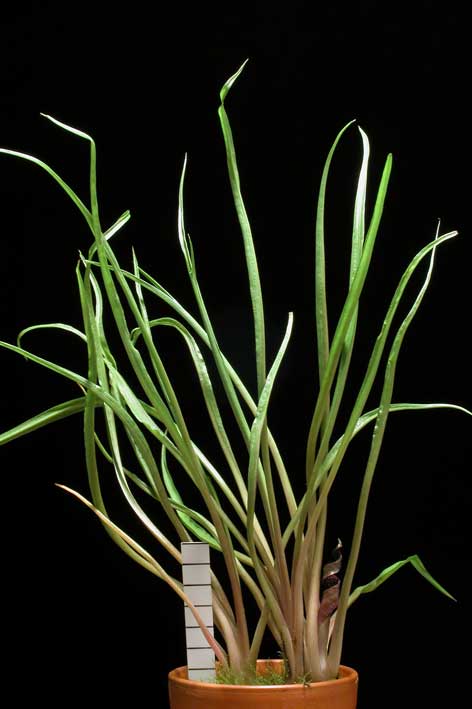 |
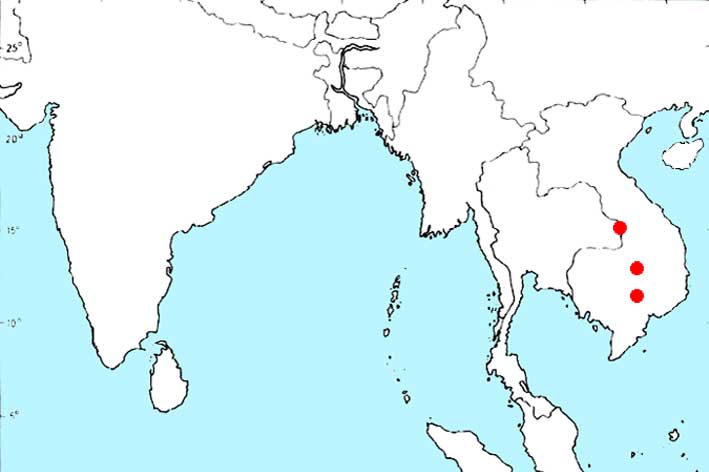 |
C. mekongensis is from the Mekong river in Thailand, Laos and Cambodia. It has a typical collar and a more or less twisted limb of the spathe with pronounced transverse rims.
coll. LK5608G2, cult. B1275 |
|
 |
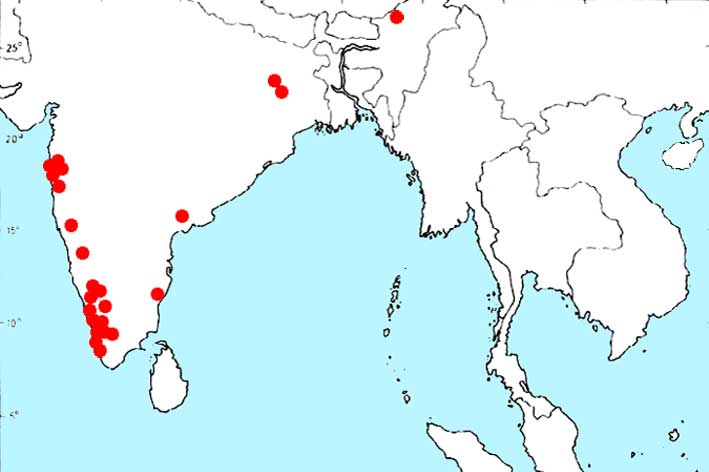 |
C. retrospiralis from India is quite like C. crispatula var. crispatula but differs in
details of the limb, having red dots in stead of lines.
coll. Bogner, cult. B1055 |
|
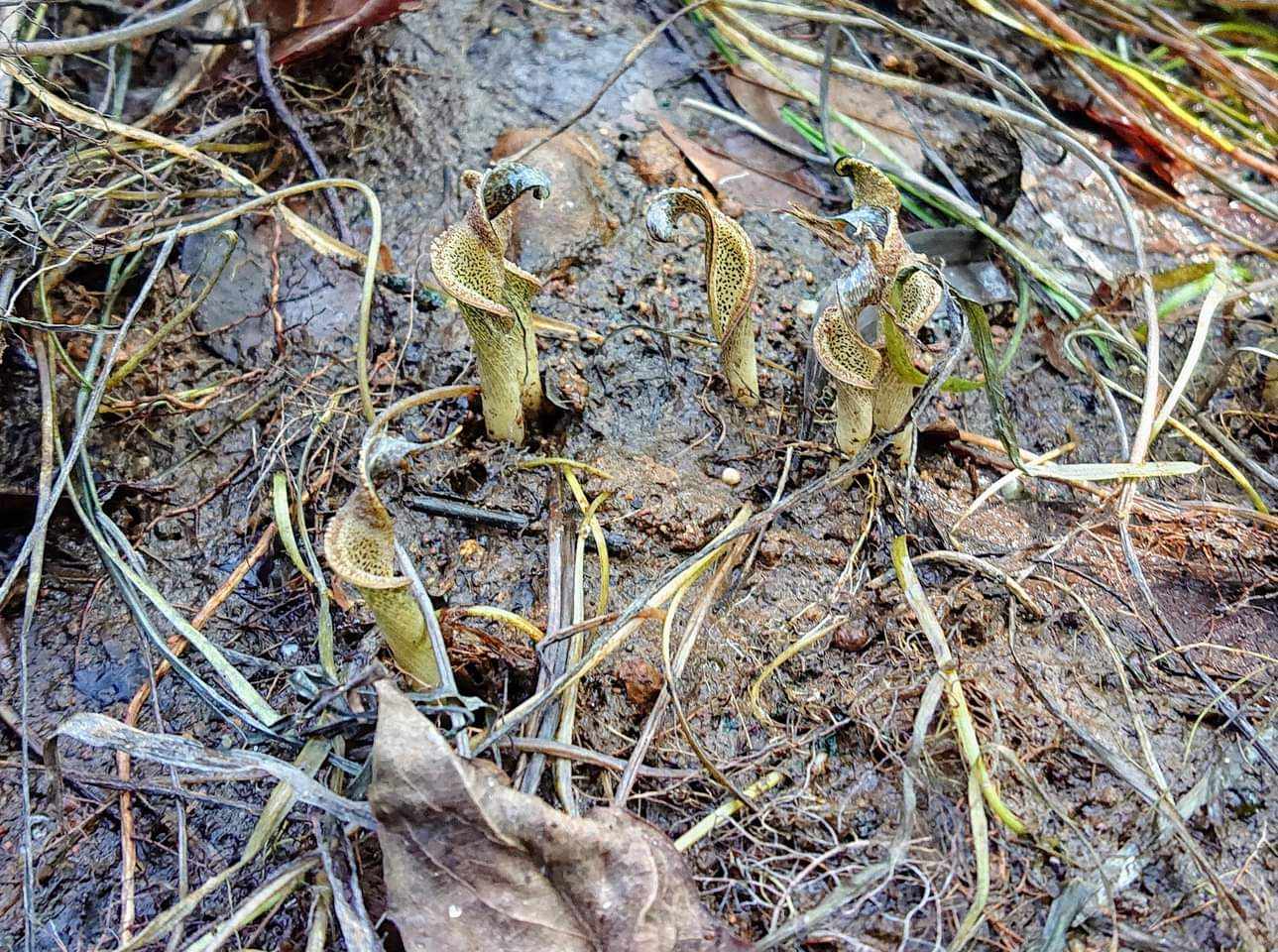 |
 |
C. sivadasanii is found in Kerala, India. In nature it has a seasonal character but it grows for over years in the aquarium without any dormancy.
coll. & photo Raj |
|
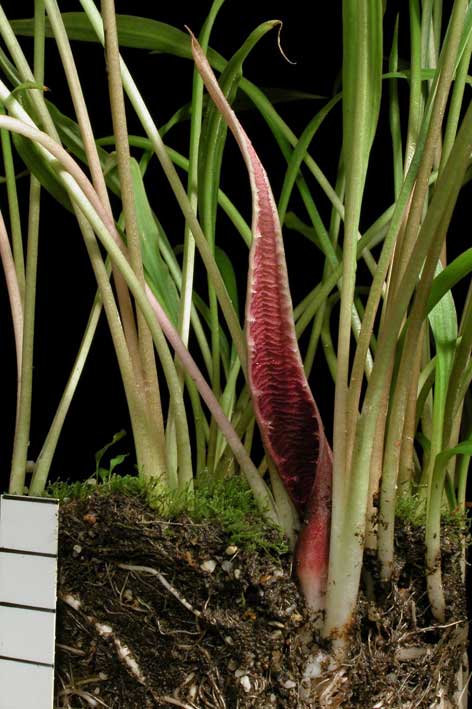 |
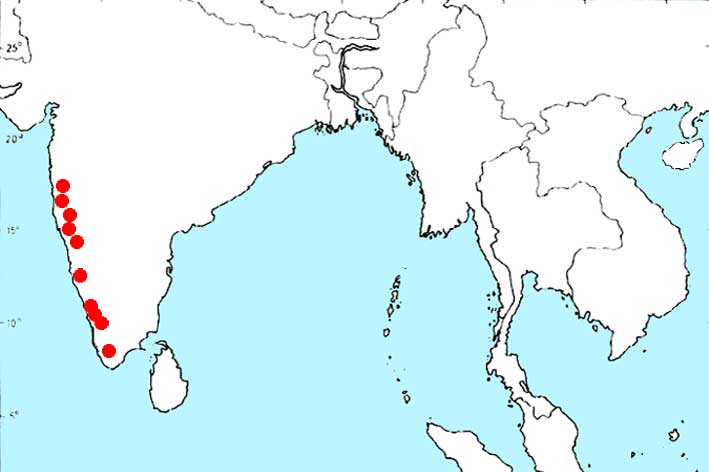 |
C. spiralis from India is quite distinct by its spathe. The variation in the leaves very big. Submerged forms may have narrow flaccid leaves.
coll. Cook, cult. B 1165 |
|
| |
|
|
|
For the aquarist the crispatula group splits into two parts. In the first part are the plants which grow always submerged in shallow water, these have flaccid leaves: C. crispatula var. balansae, C. crispatula var. flaccidifolia, C. crispatula var. tonkinensis and C. crispatula var. planifolia.
These are well suited fro the aquarium.
In the other part are plants with a seasonal character, due to changes in the water level. They grow emerged in the dry season, mostly in full sun and go dormant at the seasonal high water, for example, water levels in the Mekong river may rise 5 - 10 m. They form short 'monsoon leaves', terete leaves which are reduced to the main vein. These plants are: C. crispatula var crispatula, C. crispatula var. decus-mekongensis, C. crispatula var. kubotae and C. crispatula var. yunnanensis.
This adaptation is also seen in C. cruddasiana, C. loeiensis, C. mekongensis and even in C. retrospiralis. As far as I know, C. albida does not show any dimorphism.
C. crispatula var. balansae / flaccidifolia are very popular aquarium plants. From the rest mentioned here, var. tonkinensis, C. albida and C. spiralis are rare in the aquarium hobby.
All plants of the 'crispatula group' are easy to cultivate. Most grow in a
calcium rich environment, limestone, and will prefer hard or at least neutral water.
See Jacobsen's key for the albida / crispatula group. (1991)
Updated January 2016 |
Literature:
- Arends, J.C., Bastmeijer, J.D. & Jacobsen, N.,1982. Chromosome
numbers and taxonomy in Cryptocoryne (Araceae)II. Nord.J.Bot. 2 : 453-463.
- Bastmeijer, J.D., T. Idei & N. Jacobsen, 2010. Notes on Cryptocoryne (Araceae) of Thailand, including a new species from Loei Province. Thai Forest Bulletin (Bot.) 38: 179-183. (Document service)
- Benl, G., 1960. Ein neuer Wasserkelch aus Thailand : Cryptocoryne blassii de Wit 1960.
DATZ 13 : 116-118.
- Bogner, J., 1980. Tropische Wasserpflanzen am natürlichen Standort. Int.Waterplanten
Symp. Ludwigia, Wageningen : 51-55.
- Bogner, J. & Jacobsen, N., 1985. Eine neue Sorte : Cryptocoryne cordata Griffith
'Rosanervig'. Aqua-Planta 10(2) : 12.
- Brown, N.E., 1880. On some new Aroideae. J.Linn.Soc.XVIII : 242-245, plate IV.
- Bruggen, H.W.E. van, 1975. Cryptocoryne siamensis Gagnepain. Het Aquarium 46 : 90-91.
- Engler, A., 1898. Beiträge zur Kenntnis der Araceae VII. Englers Bot. Jahrbuch 25 : 28.
- Engler, A., 1920. (Cryptocoryne, Lagenandra in) Das Pflanzenreich IV.23.F. Araceae -
Aroideae : 232-249, Leipzig.
- Furtado, C.X., 1935. Araceae Malesicae. Gardens Bull.of the Straits Settlem. 8 : 145-148.
- Gagnepain, F., 1941. Aracees nouvelles Indochinoises. Not.Syst. 9, 3 : 131-134.
- Graaf, A.de, 1983. Sadilek over vindplaatsen van Cryptocorynen. Het Aquarium 53(2) :
51-53.
- Griffith, W., 1851. Cryptocoryne. Not.Pl.Asiat.III:134-143; Icon.Pl.Asiat.3 T.170,172.
Calcutta,.(Document service)
- Hooker, J.D., 1893. Cryptocoryne, Lagenandra in the: Flora of British India 6 : 492-496.
- Horst, K., 1981. Sind die Cryptocorynen aus Borneo für Aquarien geeignet ? I. Aqua-Planta
6(3): 59-61.
- Horst, K., 1982. Sind die Cryptocorynen aus Borneo für Aquarien geeignet ? IV.
Aqua-Planta 7(2): 7-11.
- Horst, K., 1986. Pflanzen im Aquarium. Ulmer, Stuttgart.
- Jacobsen, N., 1977. Chromosome numbers and taxonomy in Cryptocoryne (Araceae). Bot.Notiser
130 : 71-87.
- Jacobsen, N., 1982. Cryptocorynen. Alfred Kernen Verlag, Stuttgart.
- Jacobsen, N., 1985. Cryptocoryne cordata Griffith (Pflanzenportrait). Aqua-Planta 10(2):
15-18.
- Jacobsen, N., 1985. The Cryptocoryne (Araceae) of Borneo. Nord.J.Bot. 5 : 31-50.
- Jacobsen, N., 1986. Deterioration of the habitats of the Cryptocoryne species.
Symp.Bedreiging van het aquatisch milieu, Ludwigia, Wageningen : 33 (Document service).
- Jacobsen, N. & J.Bogner, 1987. Die Cryptocorynen
der Malaiischen Halbinsel (4.Teil, Schluss). Aqua-Planta 12 : 96-103 (+cover).
- Jacobsen, N. 2002. Der Cryptocoryne Griffith - Komplex (Araceae) in Malesien. Aqua-Planta
27 : 150-151.
- Jacobsen, N. & D. Sookchaloem, 2010. Cryptocoryne in the Flora of Thailand.
- Jacobsen, N. & J.D. Bastmeijer, 2014. On Cryptocoryne coradata var. siamensis. The Aquatic Gardener 27(2) : 28-39. (Document service)
- Kasselmann, C., 1995. Aquarienpflanzen. Ulmer, Stuttgart.
- Kettner, C., 1997. Cryptocorynen in Borneo.
Aqua-Planta 22(3): 100-104.
- Mansor, M., Kamaruzaman Mohd. & Adenan Jaafar, (?). A vanishing cordate Water Trumpet.
Nature Malaysiana 17(3) : 99-100.
- Merrill, E.D., 1921. A Bibliographic Enumeration of Bornean Plants. Journal of the Straits
Branch of the Royal Asiatic Society : 106-109.
- Möhlmann, F., 1978. Eine rätselhafte Cryptocoryne von Borneo. Das Aquarium 12/7 :
397-400.
- Möhlmann, F., 1979. Publikation einer neue Cryptocoryne. Cryptocoryne Möhlmann 36
(spec."rosanervis"). Aqua-Planta 4(1): 3 (+cover).
- Möhlmann, F., 1980. Warum gedeihen einige Cryptocoryne Arten nur schlecht oder auch gar
nicht in unser Aquarium? Aqua-Planta 2-80 : 11-12 (cover).
- Möhlmann, F., 1982. Cryptocorynen - Problempflanzen ? Aqua-Planta 7(1): 6-7 (cover).
- Mühlberg, H., 1980. Das grosse Buch der Wasserpflanzen. Dausien, Hanau.
- Othman, A.S., N. Jacobsen & M. Mansor, 2009. Cryptocoryne of peninsular Malaysia. Penerbit University Sains Malaysia, Pulau Pinang.
- Rataj, K., 1974. New cultivated species of the genus Cryptocoryne (Araceae). Folia
Geobot.Phytotax. 9 : 313-314, plates 15-16.
- Rataj, K., 1975. Revision of the genus Cryptocoryne Fischer. Studie CSAV, c.3.Praha.
- Rataj, K. & Horeman, T.J., 1977. Aquarium Plants. TFH Publ, USA.
- Ridley, H.N., 1905. The Aroids of Borneo. J.Str.Br.Roy.As.Soc. 44 : 169-171.
- Ridley, H.N., 1907. Cryptocoryne Fisch. Materials for a Flora of the Malayan Peninsula :
3-6.
- Ridley, H.N., 1925. Cryptocoryne. Fl. Malay Pen. 5 : 86-88.
- Roe, C.D., 1967. A manual of aquarium plants. Shirley aquatics Ltd.
- Sadilek, V., 1973. Neue Cryptocorynen X : Cryptocoryne purpurea Ridley. DATZ 26 : 128-130.
- Sadilek, V., 1974. Problemen bij de cultuur van Cryptocorynen. Het Aquarium 45(*) : 61-63.
- Sadilek, V., 1979. Unklarheiten bei Cryptocoryne cordata. DATZ 32/2 : 56-58.
- Sadilek, V., 1981. Sind die malayischen Cryptocorynen Problempflanzen ? Aqua-Planta 6(3):
76-78.
- Sadilek, V., 1982. Unklarheiten um Cryptocoryne grabowskii und Cryptocoryne grandis.
Aqua-Planta 7(1): 9-11.
- Schöpfel, H., 1974. Cryptocoryne siamensis. Aquarien & Terrarien 21/10 : 338-339.
- Schulze, J., 1971. Cryptocorynen aus Sarawak I-IV. DATZ 24 : 230-233, 267-270, 303-306.
- Sofiman, A.S., N. Jacobsen & M. Mansor, 2008. Cryptocoryne of Peninsular Malaysia. Penerbit Universitii Sains Malaysia.
- Wendt, A., 1955. Etwas über richtige und falsche Namen unserer Cryptocorynen. DATZ 8 :
236-240.
- Wendt, A., 1955. Cryptocoryne cordata, grandis und griffithii. Aq.& Terr. 2(5) :
146-148.
- Wendt, A., 1958. Die Gattung Cryptocoryne Fischer. Die Aquariumpflanzen in Wort und Bild
(1952-1958) Stuttgart.
- Wijngaarden, P.van & H.W.E. van Bruggen, 1999. Cryptocoryne diderici de Wit.
Aqua-Planta 24 : 114-117.
- Wit, H.C.D.de, 1951. Cryptocoryne cordata, Cryptocoryne griffithii. Het Aquarium 22(6) :
128-129.
- Wit, H.C.D.de, 1958. Cryptocoryne griffithii and its allies. Fishkeeping * (1958 ?)
- Wit, H.C.D.de, 1960a. Cryptocoryne blassii de Wit sp.nov. DATZ 13(4) : 115-116.
- Wit, H.C.D.de, 1960b. Het genus Cryptocoryne (13). Cryptocoryne cordata Griffith. Het
Aquarium 31(3) : 50-51.V
- Wit, H.C.D.de, 1961. Het genus Cryptocoryne (16), Cryptocoryne ferruginea Engler, C.
gomezii Schott, C. grabowskii Engler. Het Aquarium 31(9) : 212-214.
- Wit, H.C.D.de, 1970. A key to the species of Cryptocoryne Fish.ex Wydl.(Araceae).
Misc.papers LH Wageningen 6 : 257-280.
- Wit, H.C.D.de, 1975. Oude en nieuwe namen in Cryptocoryne. Artedi 26(1) : 112-114.
- Wit, H.C.D.de, 1990. Aquarienpflanzen, 2. Auflage. Ulmer, Stuttgart.
|
|
|
|
 |
|
|